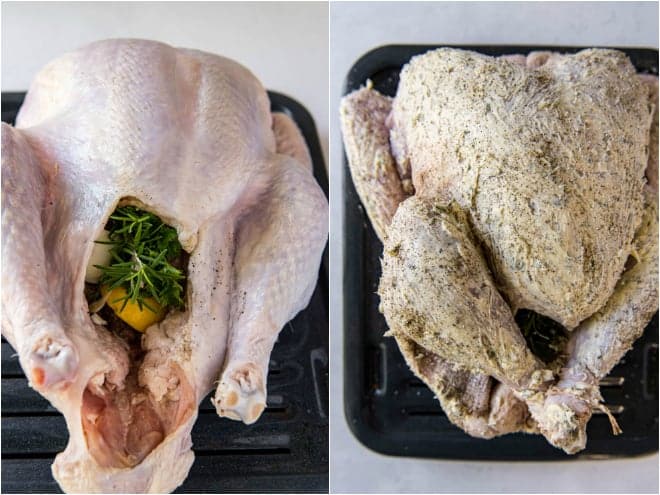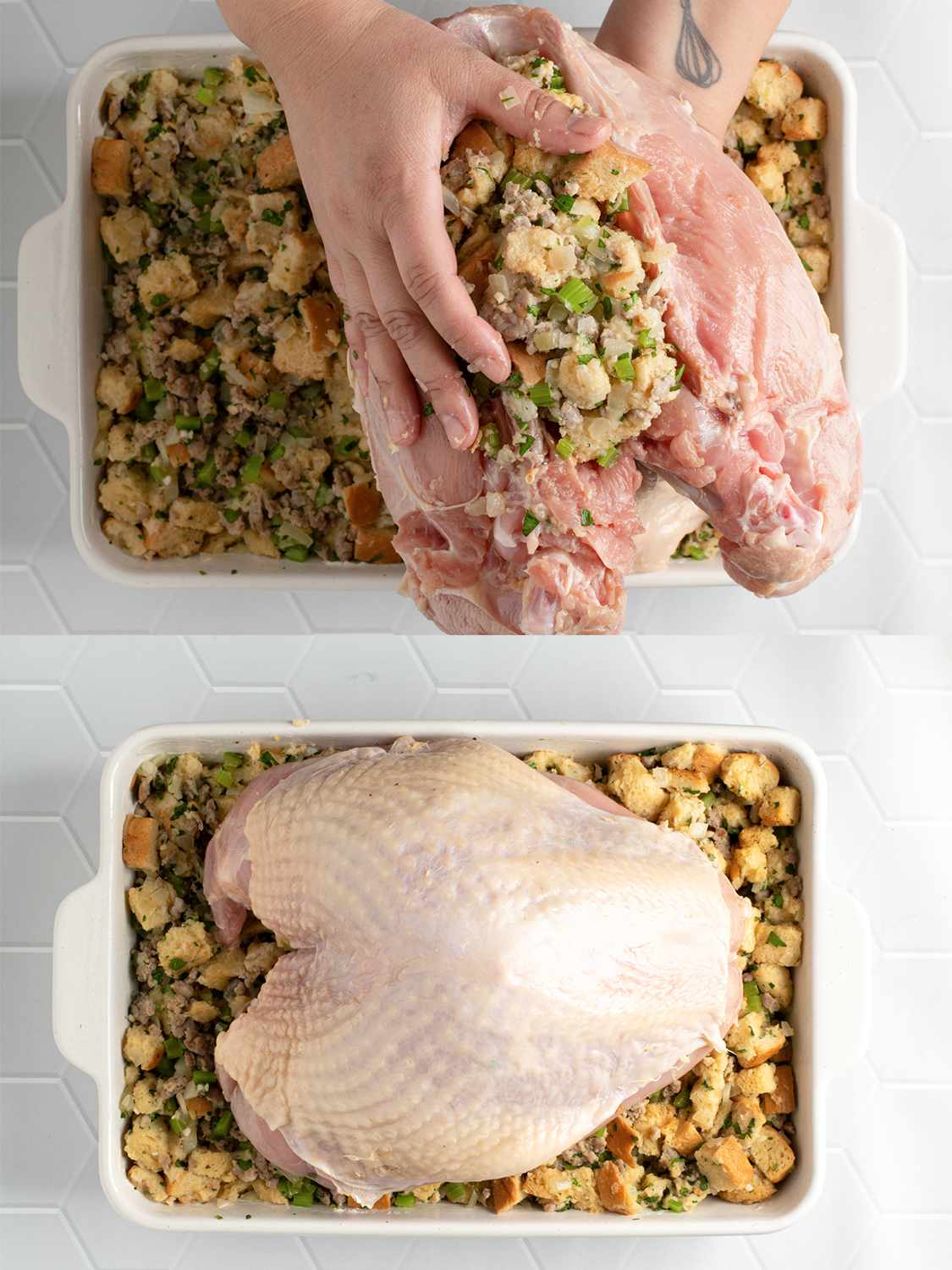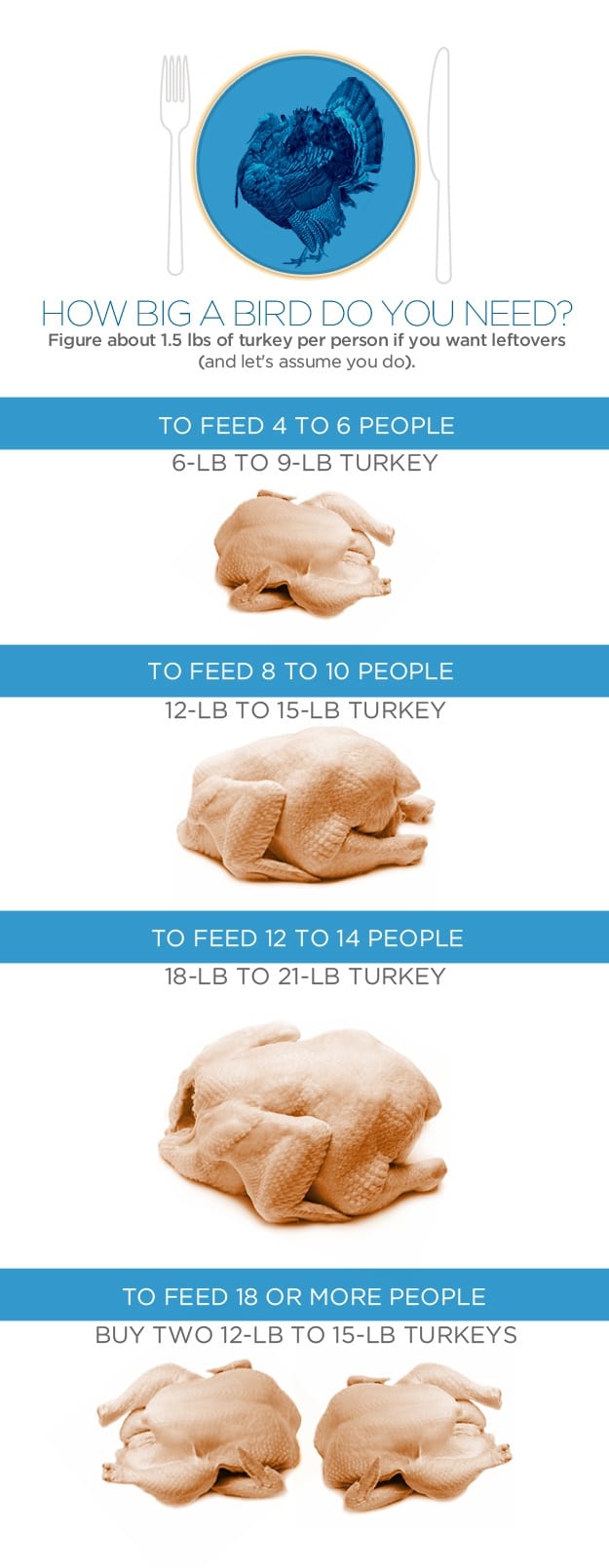Do You Cook a Turkey at 325 or 350 Degrees? Are you prepping your Thanksgiving dinner and wondering if the best temperature to cook a turkey is 325 degrees or 350? The good news is that both have advantages! Here, we’ll answer all of your questions about the ideal roasting temperatures for crisp and juicy meat. So whether you’re an experienced chef with years under their belt, or are relatively new to home-cooking, this guide will provide all the useful tips necessary for getting the perfect Thanksgiving bird in no time. Read on for more advice about roasting at 325°F versus 350°F., plus practical instructions like how many minutes per pound to cook it—and how to tell when it’s done. Let’s get started!
Do You Cook a Turkey at 325 or 350 Degrees?
Get ready for perfectly succulent, juicy turkey with no fuss! Start by roasting your bird at either 325° or 350° (depending on its size) and cook until the thermometer registers 160°. After that’s done, tip it slightly to drain any juices from its body cavity into a pan before transferring it onto a platter. Then all you have to do is let stand in an uncovered warm place for 15-30 minutes while everyone gets excited — finally time to carve up this delicious feast!
Why It Matters to cook a Turkey at 325 or 350 Degrees?
Cooking a turkey at 325 degrees or 350 degrees is important for ensuring that the turkey is cooked properly and thoroughly. Cooking at a lower temperature of 325 degrees will allow the bird to cook more slowly, which helps it become more tender and flavorful. Cooking at a higher temperature of 350 degrees helps to quickly brown the exterior of the bird, creating a crispy skin. Using both temperatures when cooking a turkey helps to evenly cook the entire bird, ensuring that the inside is cooked to perfection while the outside is golden and crisp. Additionally, using both temperatures makes sure that no part of the bird is overcooked or undercooked.
- When prepping a turkey for roasting, it is recommended to season it inside and out with salt and pepper. The seasoning will help to flavor the bird, as well as helping to create a delicious, crispy skin. It is also recommended to rub butter or oil onto the turkey’s skin for added flavor and crispness. A roasting pan should be used when roasting a turkey in order to catch any juices or fat that may drip off during the cooking process. Additionally, it is important to make sure that the turkey is not overcrowded in the pan so there is enough space for proper air circulation.

- When roasting a turkey, it is important to pay attention to both temperature and time when determining when it’s done. To ensure that your turkey is cooked safely, it should reach an internal temperature of 165 degrees Fahrenheit. Additionally, a turkey can also be tested for doneness by checking the juices that run out when pierced with a skewer — if the juices are clear, then it’s done.

- Cooking a turkey at 325 or 350 degrees helps to ensure that the bird is cooked properly and thoroughly. Using both temperatures when cooking a turkey helps to evenly cook the entire bird, ensuring that no part is overcooked or undercooked. Additionally, it’s important to season the turkey before roasting, as well as paying attention to time and temperature in order to ensure that your bird is safe for consumption. Following these tips can help you create a flavorful and delicious turkey every time.
Advantages of Cooking a Turkey at 325 Degrees
– Low temperature of 325 degrees helps the bird to be more tender and flavorful
– High temperature of 350 degrees helps to quickly brown the exterior of the bird, creating a crispy skin
– Using both temperatures when cooking a turkey helps to evenly cook the entire bird, ensuring that no part is overcooked or undercooked
– Seasoning the turkey before roasting helps to flavor the bird, as well as helping to create a delicious, crispy skin
– Using a roasting pan helps to catch any juices or fat that may drip off during the cooking process
– Paying attention to time and temperature in order to ensure that your bird is safe for consumption
Disadvantages of Cooking a Turkey at 325 Degrees
– Cooking the turkey at a lower temperature for too long can cause it to dry out
– If not enough butter or oil is used, the bird’s skin may not become as crispy as desired
– If the turkey is overcrowded in the pan, there won’t be enough space for proper air circulation
– If the temperature is too low, it could take too long to reach the desired internal temperature of 165 degrees Fahrenheit
– Not following recommended cooking times and temperatures can result in an undercooked or overcooked bird.
Advantages of Cooking a Turkey at 350 Degrees
– High temperature of 350 degrees helps to quickly brown the exterior of the bird, creating a crispy skin
– Using both temperatures when cooking a turkey helps to evenly cook the entire bird, ensuring that no part is overcooked or undercooked
– Using butter or oil on the turkey’s skin provides additional flavor and crispness
– Using a roasting pan helps to catch any juices or fat that may drip off during the cooking process
– Paying attention to time and temperature in order to ensure that your bird is safe for consumption
Disadvantages of Cooking a Turkey at 350 Degrees
– Cooking the turkey at too high of a temperature can cause it to dry out
– If the turkey is overcrowded in the pan, there won’t be enough space for proper air circulation
– If not enough butter or oil is used, the bird’s skin may not become as crispy as desired
– Not following recommended cooking times and temperatures can result in an undercooked or overcooked bird.
Is it better to roast turkey at 325 or 350?
A perfect turkey starts with the right temperature! If you’re cooking a larger bird between 12-14 lbs, crank up your oven to 350 degrees for faster cook time and crispy skin. For something on the smaller side, aim for 325 degrees instead — it will ensure juicy meat with maximum flavor potential.
What’s The Ideal Temperature For Smoking Turkey?
The ideal temperature for smoking a turkey is around 225 degrees Fahrenheit. This low and slow method of cooking helps to create tender, juicy meat while maintaining the rich smoky flavor that comes with smoking. It’s important to keep an eye on the internal temperature of the bird to make sure it reaches 165 degrees Fahrenheit before serving.
Additionally, using a thermometer to check the smoker’s temperature is also recommended for best results. When the internal temperature of the bird reaches 165 degrees Fahrenheit, and the juices are clear, then it’s done.
Recommended Internal Temperature For Turkey

The recommended internal temperature for a cooked turkey is 165 degrees Fahrenheit. This ensures that the bird has been fully cooked and is safe to consume. It’s important to use a thermometer when checking the internal temperature of the turkey in order to guarantee accurate results and make sure it is done before serving.
Safety Tips When Cooking a Turkey
When it comes to Do You Cook a Turkey at 325 or 350 Degrees, the answer is both. It is recommended to cook turkeys at an oven temperature of 350°F for up to 2½ hours and then reduce the temperature to 325°F for the remainder of cooking time. This helps ensure that your turkey cooks safely and evenly.
Whether you are cooking a turkey at 325 or 350 degrees, it is important to take safety precautions. Here are some tips:
– Make sure your oven is in good working condition and thermometer is accurate.
– Always use an oven thermometer to monitor the internal temperature of the bird. Do not rely solely on cooking times.
– Do not stuff the turkey until right before roasting. Do not stuff it too tightly, as this can prevent heat from circulating properly.
– Make sure to use a pan with a rack and place the turkey on its back so that the breast is facing up.
– Do not cook stuffing inside of the bird. Do not cover the bird with foil.
– Check the internal temperature of your turkey using a food thermometer and make sure it reaches an internal temperature of at least 165°F in order to ensure that it is fully cooked. Do not rely solely on color or texture as indicators of doneness.
– Do not leave your turkey unattended while it is cooking and check on it regularly to make sure that the temperature does not rise above 350°F.
– Do not reuse marinades or drippings from the cooked turkey for other dishes.
– Do not store leftovers in the refrigerator at temperatures higher than 40°F; this could cause bacteria to grow and contaminate the food. Do not leave cooked turkey out at room temperature for more than 2 hours.
– Do not consume raw or undercooked poultry, eggs, or any products containing them to avoid the risk of foodborne illness.
By following these safety tips when cooking a turkey, you can ensure that your bird is cooked safely and correctly. Do You Cook a Turkey at 325 or 350 Degrees? The answer is both, but it is important to follow safety precautions for proper food handling and preparation to ensure that your turkey turns out delicious!
Time Considerations for Different Degrees of Doneness
When cooking a turkey, it is important to keep in mind the time considerations for different degrees of doneness. For example, if you’re cooking your turkey at 325°F, you should plan on 8-9 minutes per pound. If you’re cooking your turkey at 350°F, plan on 6-7 minutes per pound. To ensure that your turkey is cooked through, measure the internal temperature with a food thermometer. Do not rely solely on color or texture as indicators of doneness. The turkey is safe to eat only when it has reached an internal temperature of 165°F.
By following these tips and time considerations, Do You Cook a Turkey at 325 or 350 Degrees? The answer is both, but it’s important to follow safety precautions for proper food handling and preparation to ensure that your turkey turns out delicious!
Best Practices for Internal Meat Temperature when Cooking a Turkey
When Do You Cook a Turkey at 325 or 350 Degrees, it is important to remember that the internal temperature of the bird matters more than cooking time. Use a food thermometer to check the turkey’s internal temperature in its thickest part (not touching bone) and make sure it has reached an internal temperature of 165°F. Do not rely solely on color or texture as indicators of doneness.
Knowing the proper internal temperature for different types of poultry is essential for food safety and to ensure that your bird is fully cooked. Do You Cook a Turkey at 325 or 350 Degrees? The answer is both, but it’s important to follow best practices when checking the internal temperature to ensure that your turkey is cooked through and safe to eat.
Other Useful Tips to cook Turkey
• Let the turkey sit for 20-30 minutes before carving. This will allow the juices to redistribute throughout the bird, resulting in a juicier and more tender meat.
• Baste the turkey with pan drippings or butter every 30 minutes during roasting for added flavor and moisture.
• Use an oven thermometer to ensure your oven is accurately heating the turkey.
• Stuff the turkey loosely as this can affect the rate of cooking and make it difficult to gauge the internal temperature.
• Use a thermometer to check the internal temperature of the turkey before serving.
• Let the cooked turkey rest for 10-15 minutes before carving. This will allow the juices to redistribute throughout and help prevent any loss of moisture.
• Use two forks to carve the turkey instead of a knife as this will make it easier to slice through the meat.
• Add herbs, spices, and aromatics like onions or garlic to the stuffing for added flavor.
• To ensure even cooking, place any stuffing in the bird’s cavity before roasting.
• Don’t forget to save the giblets for gravy and other recipes!
• Use a meat thermometer to check the internal temperature of your turkey for accurate results.
Related posts: how long does turkey last in the fridge
Conclusion
Do You Cook a Turkey at 325 or 350? Cooking a turkey at 350 degrees Fahrenheit is safe and can result in a delicious, juicy bird with great flavor. It’s important to pay attention to the internal temperature of the turkey and use a thermometer when needed in order to ensure that your bird is safe for consumption. Use these tips and tricks to help you achieve the perfect Thanksgiving turkey!
FAQS
Should I Stuff The Turkey Before Cooking It?

It is not recommended to stuff the turkey before cooking it. Stuffing can increase the risk of foodborne illness as it increases the amount of time that the stuffing stays between 40-140 degrees Fahrenheit, a temperature range known as the ‘danger zone’ where bacteria can easily multiply. Additionally, when you stuff the bird, this can affect the rate at which it cooks, making it difficult to accurately gauge the internal temperature and ensuring even cooking. For safety reasons, it is best to cook the stuffing separately from the turkey.
Is 325 too low to cook a turkey?
If you’re looking for the perfect golden-brown Thanksgiving turkey, make sure to bake it at 325°F. For every pound in weight, your bird will need between 20 and 25 minutes of oven time – but don’t forget to cover those wings with aluminum foil halfway through cooking; this way they’ll stay succulent and beautifully bronzed!
What is the best temperature to bake a turkey?
Roasting a turkey just right can be tricky — too high and it’s dried out, too low and you’d better start eating something else for dinner. But with the Test Kitchen’s sage advice of 375℉ as your oven temperature guide, dinnertime perfection is entirely achievable! To make sure everything comes together perfectly by mealtime, simply insert an instant-read thermometer into the thigh to check if it’s done.
What temp is turkey the most tender?
To ensure perfectly cooked poultry, the thighs must be an internal temperature of 175°F (79°C), while making sure not to overcook the breast meat with a target reading of 157°F (69°C) for optimal flavor.
How long should a turkey bake at 350?
To achieve the perfect, succulent roast turkey for your holiday feast, calculate 13 minutes per pound at 350°F to get an unstuffed bird ready in roughly 3 hours (12-14 lbs.). If you’d like a stuffed turkey instead, give yourself 15 minutes of roasting time per pound and presto! You’ll be savoring that delicious dinner soon.
Do you cook a 20 pound turkey at 325 or 350?
Prepare a mouth-watering 18 to 20 pound turkey with a flavorful crispy outside and juicy inside by cooking it at 425°F for 3½ – 3¾ hours, then reduce the heat to 400°F and cook for another 3¾ – 4 hours. Finally set the oven at 350°F until fully cooked in about 4-4 ¼ hour range. Enjoy!
Can You Cook Turkey at 400 Degrees?
Yes, you can cook a turkey at 400 degrees Fahrenheit. This is a higher temperature than the standard cooking temperature for turkey, which is typically around 325-350 degrees Fahrenheit. Cooking a turkey at 400 degrees will result in a crispier skin and faster cooking time.
However, it’s important to note that cooking a turkey at a high temperature requires close attention to prevent overcooking or drying out the meat. To avoid this, you can cover the turkey with foil for the first half of the cooking time, and then remove the foil for the remaining cooking time to ensure the skin gets crispy. Additionally, it’s important to use a meat thermometer to check the internal temperature of the turkey to ensure it’s fully cooked and safe to eat. The turkey should reach an internal temperature of 165°F in the thickest part of the meat, such as the breast or thigh.
What Size Turkey Should I Buy?

The size of turkey you should buy will depend on the number of people you plan to serve and how much leftovers you want. As a general rule of thumb, plan for about 1 pound of turkey per person if you’re buying a whole turkey. If you want leftovers, you may want to consider buying a larger turkey.
Here’s a quick breakdown of turkey sizes and the number of servings they typically provide:
- 8-10 pound turkey: 4-6 servings
- 10-12 pound turkey: 6-8 servings
- 12-14 pound turkey: 8-10 servings
- 14-18 pound turkey: 10-12 servings
- 18-20 pound turkey: 12-14 servings
- 20-24 pound turkey: 14-16 servings
Of course, these are just estimates and the actual number of servings may vary depending on appetites and how many sides you plan to serve. It’s always better to err on the side of having too much turkey than not enough.
How long does it take to cook a turkey on 325?
The cooking time for a turkey at 325°F will depend on the size of the bird. As a general rule of thumb, plan for approximately 15-20 minutes of cooking time per pound of turkey. So for a 12-pound turkey, the estimated cooking time at 325°F would be around 3-4 hours.
It’s important to note that these times are just estimates and the actual cooking time may vary depending on several factors, such as the type of oven, the type of roasting pan, and the starting temperature of the turkey. To ensure that the turkey is fully cooked and safe to eat, use a meat thermometer to check the internal temperature. The turkey should reach an internal temperature of 165°F in the thickest part of the meat, such as the breast or thigh. It’s also a good idea to let the turkey rest for 15-20 minutes before carving to allow the juices to redistribute.
Do you cook a turkey at 325 or 350 per pound?
When cooking a whole turkey, the recommended cooking temperature is usually 325°F to 350°F. The cooking time will depend on the weight of the turkey, but a general rule of thumb is to cook the turkey for 15-20 minutes per pound at a temperature of 325°F to 350°F.
So whether you cook the turkey at 325°F or 350°F per pound, the cooking time will be roughly the same. However, it’s important to note that cooking at a slightly lower temperature of 325°F can result in more even cooking and a moister turkey. It’s also important to use a meat thermometer to check the internal temperature of the turkey to ensure it’s fully cooked and safe to eat. The turkey should reach an internal temperature of 165°F in the thickest part of the meat, such as the breast or thigh.
Is it too high to cook a turkey at 350?
No, it is not too high to cook a turkey at 350 degrees Fahrenheit. However, it’s important to pay attention to the internal temperature of the bird and use a thermometer when needed in order to ensure that it is safely cooked.
Should I cover my turkey with foil while cooking?
Yes, it’s a good idea to cover your turkey with foil while cooking. This will help to keep the bird from drying out and ensure even cooking. Just make sure to uncover the turkey for the last 30 minutes of cooking in order to brown the skin.
How long to cook a turkey at 325 covered or uncover?
It typically takes around 2-3 hours to cook a turkey on 325 degrees, whether it is covered or uncovered. However, it’s important to pay attention to the internal temperature of the bird and use a thermometer when needed in order to ensure that it is safely cooked.
What oven setting is best for turkey?
The recommended oven setting for cooking a turkey is 325°F to 350°F. This is a moderate temperature that will cook the turkey thoroughly while also ensuring that the skin does not burn or become overly browned. It’s also important to note that many recipes recommend starting the turkey in a hot oven (around 400°F) for the first 30 minutes to help brown the skin, and then lowering the temperature to 325°F to finish cooking.
When roasting a turkey, it’s important to use a meat thermometer to check the internal temperature of the turkey to ensure it’s fully cooked and safe to eat. The turkey should reach an internal temperature of 165°F in the thickest part of the meat, such as the breast or thigh. It’s also a good idea to let the turkey rest for 15-20 minutes before carving to allow the juices to redistribute.
Is it better to cook a turkey at a lower temperature?
Cooking a turkey at a lower temperature can affect the texture and flavor of the bird. It’s best to cook a turkey at 350 degrees Fahrenheit in order to achieve optimal results. However, it’s important to pay attention to the internal temperature of the bird and use a thermometer when needed in order to ensure that it is safely cooked.
What side of foil goes on turkey?
The dull side of the foil should be placed on top of the turkey. The shiny side will reflect heat back at the bird, which can prevent it from cooking evenly. It’s important to pay attention to the internal temperature of the bird and use a thermometer when needed in order to ensure that it is safely cooked.
When should I put tin foil on my turkey?
Tin foil should be placed on the turkey approximately an hour and a half before the bird is done cooking. This will help to keep the bird from drying out and ensure even cooking. Just make sure to uncover the turkey for the last 30 minutes of cooking in order to brown the skin. It’s important to pay attention to the internal temperature of the bird and use a thermometer when needed in order to ensure that it is safely cooked.
What is the danger zone for turkey?
The “danger zone” for turkey (and other perishable foods) is the temperature range between 40°F and 140°F (4°C and 60°C). This is the temperature range where harmful bacteria can grow rapidly and cause foodborne illness.
When cooking a turkey, it’s important to ensure that the turkey is cooked to a safe internal temperature of 165°F (74°C) in the thickest part of the meat, such as the breast or thigh, to kill any harmful bacteria that may be present. It’s also important to avoid leaving the turkey in the danger zone for more than 2 hours. If the turkey is left at temperatures between 40°F and 140°F for more than 2 hours, it should be discarded to avoid the risk of foodborne illness.
To minimize the risk of foodborne illness, it’s recommended to keep the turkey refrigerated or frozen until ready to cook, and to cook it within 1-2 days of purchase. Additionally, it’s important to properly thaw the turkey in the refrigerator or cold water (never at room temperature) to avoid the risk of bacteria growth.

Bill Dawers is the CEO of naan on broughton, a contemporary Indian restaurant in Savannah, GA. The restaurant opened a few weeks ago and has already found a fan in City Talk columnist Bill Dawers. The restaurant sits right across the street from the Marshall House on Broughton Street, joining the large number of hot spots on the shopping street.

Related Posts:
How Long To Cook Frozen Chicken In A Crock Pot: A Comprehensive Guide
How To Make 3/4 Cup With Measuring Cups? – A Comprehensive Guide
Can you eat Peanut shells? Cracking the Mystery
Does Jasmine Tea Have Caffeine? Learn About Jasmine Tea